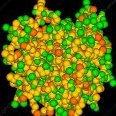Community Arsenic Levels in Northern Rivers Exceed Safety Limits, Authorities Warn
-
Recently Browsing 0 members
- No registered users viewing this page.
-
Topics
-
-
Popular Contributors
-
-
Latest posts...
-
26
Israeli military’s own data indicates civilian death rate of 83%
Look at this one. The Standard Progressive Matrices (SPM) was standardized in the Gaza Strip in 2012-13 on a sample of 1678 boys and 1817 girls aged 8 to 18 years. The sample obtained a British IQ of 67.9. Farah, Salaheldin & Bakhiet, Salaheldin & Lynn, Richard. (2015). Norms for the Standard Progressive Matrices in the Gaza Strip. Mankind Quarterly. 56. 87-95. 10.46469/mq.2015.56.1.7. -
56
John Bolton's Home Raided - Confidential National Security Docs
John Bolton's Home Raided - Confidential National Security Docs Turnaround is a B-at-ch. "I have a security clearance. Its revocation was political. This entire raid it political!!! Yep - sort like Trump being swatted for the same reason, 'eh? I keep saying it: You morons opened the Lawfare Genie's Bottle and pointed it at Trump. Once out of the bottle? It's out of the bottle -
56
John Bolton's Home Raided - Confidential National Security Docs
So you live in the opposite country? I thought it was called the USA. -
0
Middle East UN Confirms Famine in Gaza City, Condemns 'Man-Made Disaster'
PIcture courtesy of WHO UN Chief Antonio Guterres has blasted the famine in Gaza City as a "failure of humanity." A UN-backed body raised Gaza’s food insecurity status to the severest level possible—Phase 5—amidst harrowing conditions labelled as "catastrophic" by the Integrated Food Security Phase Classification (IPC). With more than half a million teetering on the brink of starvation, the situation has ignited fierce debates on the international stage. The IPC’s alarming findings have been dismissed by Israel as an "outright lie," maintaining its stance that no starvation is occurring in the region. This stark denial comes amidst claims from over 100 humanitarian bodies and even some of Israel's allies, including the UK, directly contradicting Israel’s assertions. The UN points the finger at Israel for restricting aid flow into Gaza, a claim Israel vehemently denies. At the heart of the crisis are the dire predictions for Gaza’s populace. From mid-August to late September, nearly a third of the population is expected to endure catastrophic conditions, while the number facing emergency conditions could rise to 1.14 million. Looking ahead to 2026, malnutrition threatens 132,000 children under the age of five, painting a terrifying picture for Gaza’s future. First-hand accounts from Gaza paint a bleak picture. Reem Tawfiq Khader, a mother of five, lamented the famine announcement's tardiness, emphasising the scarcity of basic nutrients. Another resident, Rida Hijjeh, described her daughter’s severe weight loss as a direct result of the famine, reported the BBC. UN aid chief Tom Fletcher lambasted the situation as preventable, blaming Israel’s "systematic obstruction" for obstructing food supplies to Gaza. This sentiment was echoed by several UN figures, including Philippe Lazzarini and Volker Turk, who decried the crisis as a manifestation of deliberate policies. UK Foreign Secretary David Lammy labelled the crisis a "moral outrage," pointing to Israel’s refusal to allow adequate aid into Gaza, a statement echoed by UN Secretary General Antonio Guterres, who condemned the situation as a "man-made disaster". Despite Israel's claims of facilitating aid, critics argue that efforts are insufficient and misdirected. IIsrael continues to face international criticism regarding the humanitarian crisis in Gaza. Although some aid drops have occurred, these actions have drawn criticism regarding their safety and effectiveness, further fuelling the debate. Amidst the chaos, the UN warned that current aid levels are far from sufficient to prevent widespread starvation. The situation unfolds as Israel readies a new military offensive in Gaza, following a Hamas-led attack in October 2023 that sparked the ongoing conflict. Since then, the humanitarian toll has been staggering, with displacement, destruction, and collapse of critical systems, turning Gaza’s fate into a global concern. The humanitarian crisis in Gaza remains a focal point for international debate, demanding urgent attention and action from all parties involved. Adapted by ASEAN Now from BBC 2025-08-23 -
-
26
Israeli military’s own data indicates civilian death rate of 83%
If you read their study, you could critique the methods. I'm sure you don't fully understand the theory of sampling.
-
-
Popular in The Pub













Recommended Posts
Create an account or sign in to comment
You need to be a member in order to leave a comment
Create an account
Sign up for a new account in our community. It's easy!
Register a new accountSign in
Already have an account? Sign in here.
Sign In Now